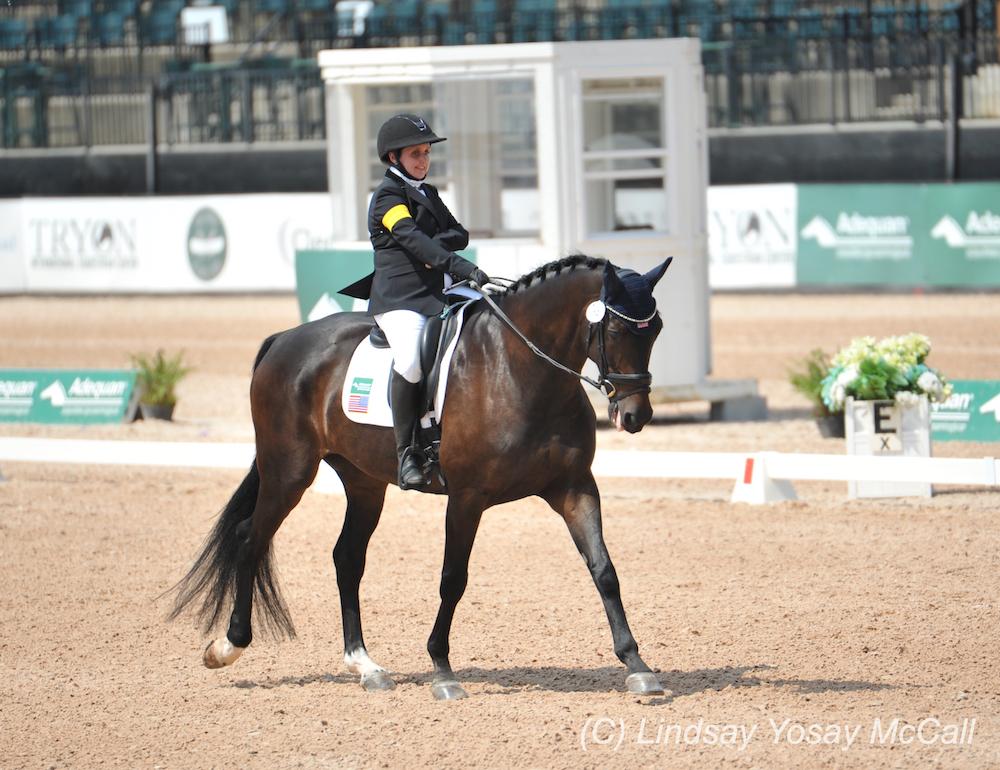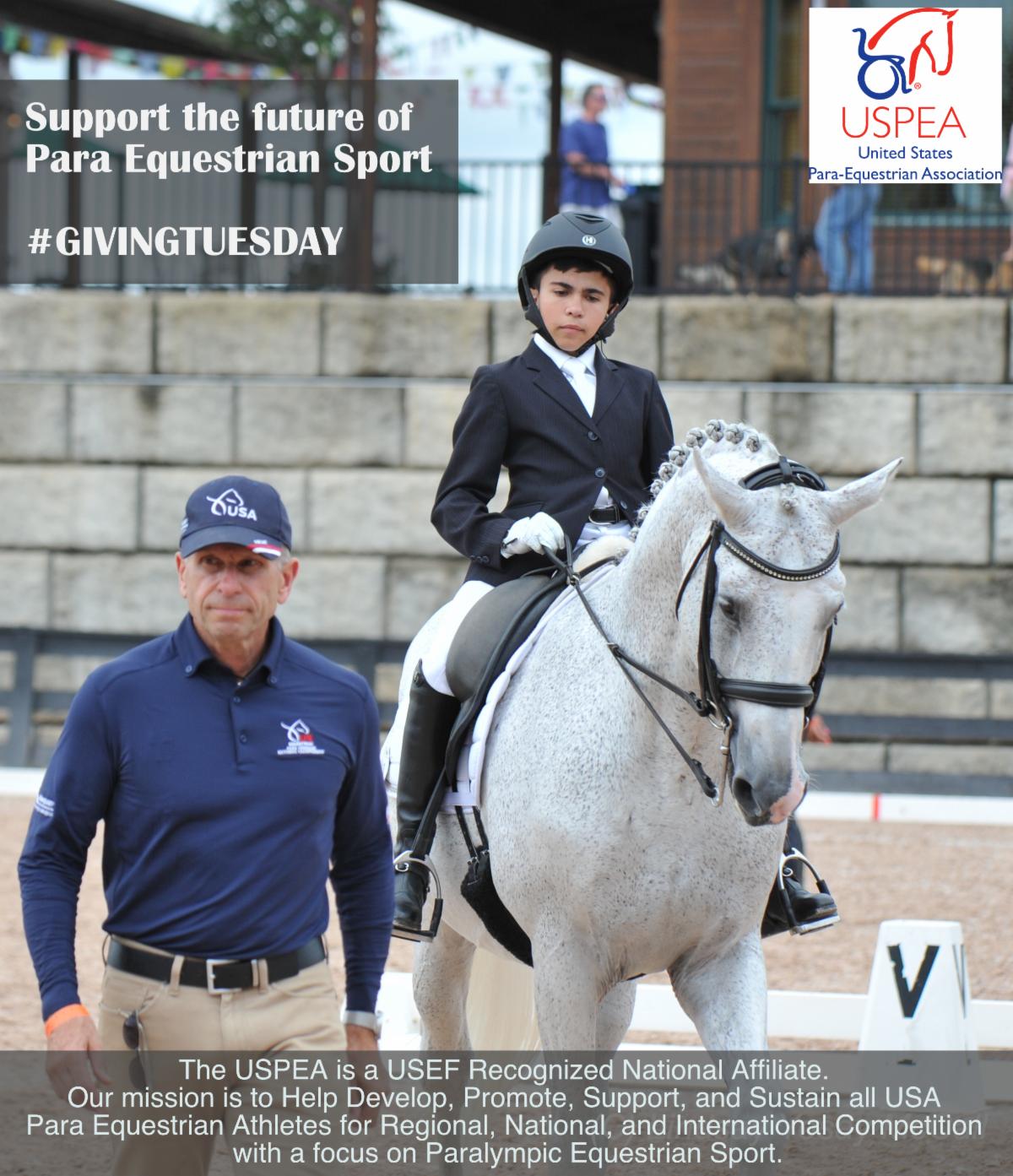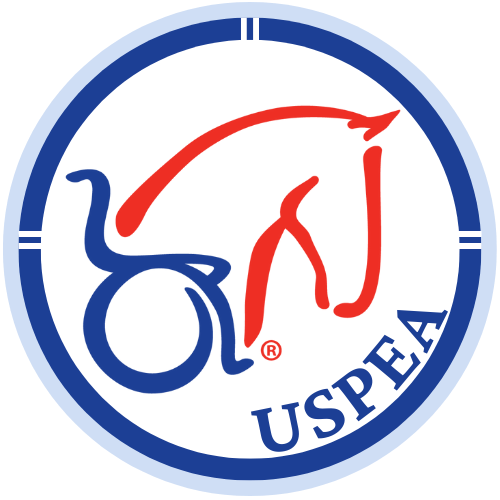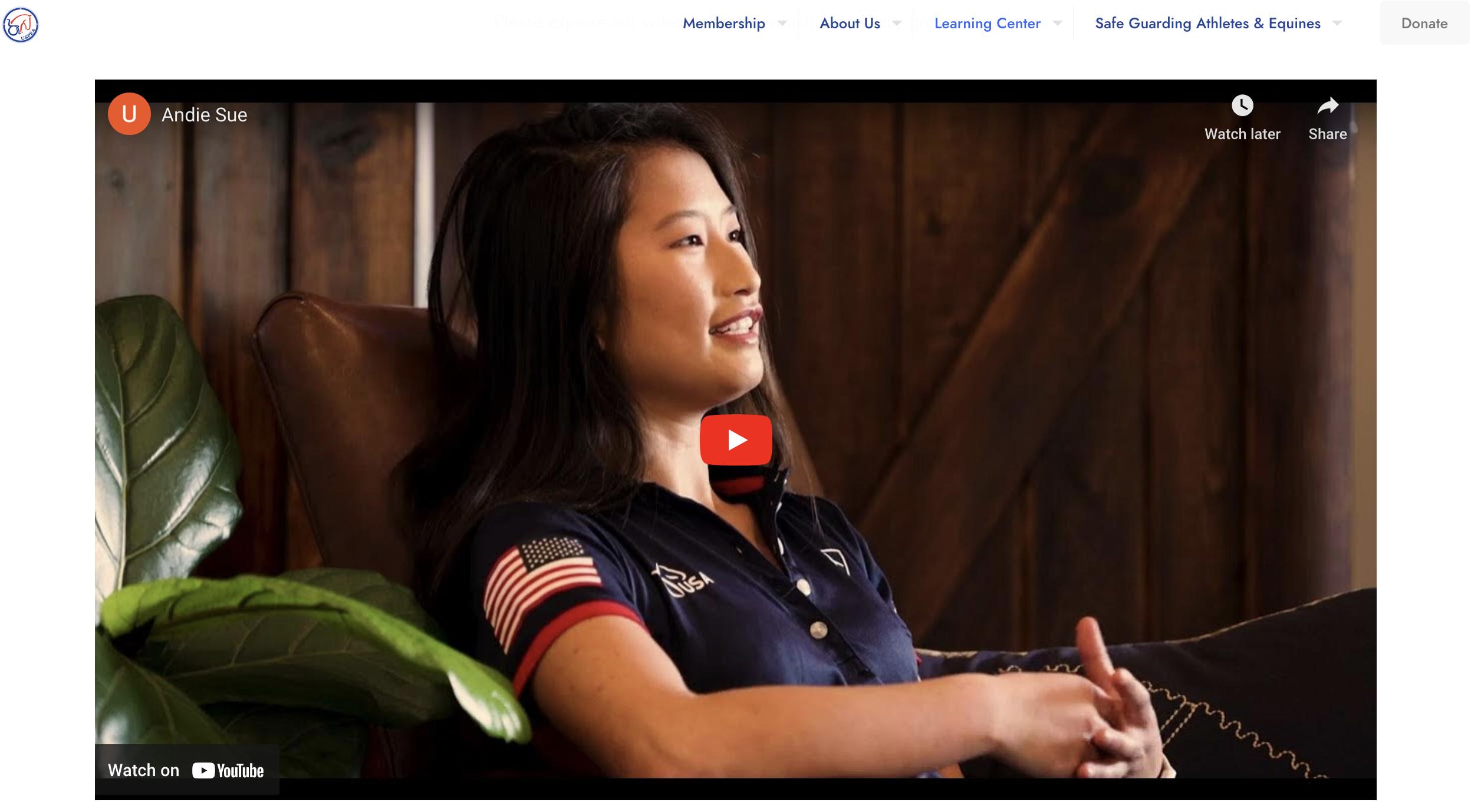
February 5, 2020 – Adequan® U.S. Para-Dressage Team and U.S. Athletes Dominate in Florida
February 5, 2020
May 19, 2020 – Support the future of Para Equestrian Sport
May 19, 2020PARA DRESSAGE
VIRTUAL EMERGING NATIONAL JUDGING PROGRAM
Bringing the National Judges to you!
USPEA is pleased to announce the 2019-2020 virtual, Para Dressage Judging Program. To kick off the pilot program, one FEI Para 3* International Judge, Adrienne Pot, has graciously agreed to view your videos and provide official score sheets for each test entered.
The Para Dressage Virtual judging program is the first step in tackling the huge geographical
challenge in the US. It takes ongoing monitoring and regular assessment to improve performance in any sport, and we trust this great opportunity provided to you by USPEA will encourage you to pursue the sport of Para Dressage and allow you to achieve your goals, whether it be competition or just for the pure “Joy” the horse can contribute to your well being.
The Emerging National Virtual Judging Program is being offered to the riders as a first step into competition with an emphasis on using the Introductory Tests to work up the levels of their Classified Grade.
Eligibility
Athlete
- All athletes, 12 years old and over, with a permanent, measurable, physical disability are welcome to enter a FEI Para Dressage Test of Choice (Introductory, Novice, Team, Individual, Freestyle) in their Classified Grade.
- Riders must either have a National or FEI Classification, riding at their grade level to participate in the program.
- This Program is only for the Emerging Para Dressage Athlete for Classified Grade athletes wishing to compete at the National level. The National Program is to compliment the USEF Developing/Elite Program and not to replace or compete with the International Program.
Horse
Horses must be a minimum of six (6) years of age. The age is counted from the 1st January of the year of birth.
Recommend horse be braided.
Dress
1. All Athletes must be neatly and correctly dressed at all times.
2. Protective Headgear must be worn by Athletes at all times when mounted.
4. Black or brown boots or stout riding shoes with heels must be worn. Plain black or
brown half-chaps or gaiters to the knee may be used.
5. For On-Line Video Competitions, breeches shall be worn, jackets are optional, but
Recommended.
6. Stock or tie: optional, but recommended. White, off-white or same color as coat.
7. Gloves: white, off-white or same color as coat.
8. Riding boots: black or same color as coat.
9. Safety vests (including inflatable) are permitted.
10. Spurs are optional. Spurs must be made of metal. The shank must be either curved or
straight, pointing directly back from the center of the spur when on the Athlete’s boot.
Spurs must not be offset, unless allowed as a compensating aid and noted on the FEI
Classification Master List. The arm of the spur must be smooth and blunt. If rowels are
used, they must be blunt, smooth and free to rotate. Metal spurs with round hard plastic
knobs (‘Impulse’ spurs) or “Dummy” spurs with no shank are allowed.
Saddlery
Per FEI Rules which can be found here: https://inside.fei.org/fei/regulations/para_dressage
FEI Dressage Tests
FEI Para Dressage Tests may be found here: https://inside.fei.org/fei/your-role/organisers/p-e-dressage/tests
Gr. I, II, III must ride in 40 x 20 meter arena.
Gr. IV, V must ride in 60 x 20 meter arena.
Video Procedure
The camera must be placed a “C” (far end of ring/arena). If the zoom feature is used the horse may be no larger than ¼ of the screen. The recording should start approximately 5 seconds before the rider enters the arena. In an indoor arena, the rider may already be in the arena, and the recording will start 5 seconds before the judging of the class begins. The recording should finish approximately 5 seconds after the class ends or after the final salute at the end of the test.
- It is recommended that you film with your back to the sun.
- Make sure the camera is steady and the horse in the center of the frame.
- Use highest quality setting on camera.
- Set the zoom before you start and do not alter it once you have started filming.
- Ensure the light setting is correct for the time of day.
- Stand at C either with your back to C or behind C facing A and do not move from that spot.
- Make sure you video from the start of the test as they turn on center line and keep videoing
- until after the final halt so we can see some walk work as the leave the arena (1/2 dozen steps or so).
a. Make sure that a well-lighted ring/arena is used.
b. Riders entering the FEI Freestyle to music test, must ensure that the sound on the video
recording device is switched on and that the music can be clearly heard in the video.
c. The name of the video file should include the rider’s last name, horse name, date, Grade and
test being submitted.
d. Videos may include more than one test providing there is a five second pause between
tests, and are clearly marked with the test, date, rider’s last name and horse name.
Please Note: If athlete submits video from competition, then athlete will not receive scores from the
Virtual Judging Panel. Only comments.
How to Create a YouTube Account
Go to YouTube.com and create an account. To do this, click on the “Sign Up” button at the top of the screen. Fill out all of the requested information. An e-mail will be sent to you to confirm your e-mail address. Clink the link to confirm.
Customize Your YouTube Profile
You can customize your profile by clicking on your username at the top of the screen. You can choose to add a photo, video logs, favorite videos, subscribers and friends.
Fill In the Video Upload Information
To upload a video, go to the upload page by clicking on “upload” in the upper right corner of the homepage. On this page, fill out your video information including title, description and tags.
Tags are key words used to describe your video, i.e. Gr. Test..
Upload the Video to YouTube
The next step is to upload your video onto YouTube from your computer. Click on “Upload Video” to find a video file on your computer. Next, click the browse button to search for the file you want to upload. Double click on the file and it will appear in the text box. Click on “Upload Video”.
Please be aware that posting videos on YouTube without security settings will allow outside individuals to view your video. It is highly recommended that users set the YouTube security setting to “unlisted” (only those who have been provided the link, can view the video).
Video Entry Process and Checklist
Entry Due Date: 25th of each month.
Once riders have a video of themselves performing a specific test, send the YouTube video link to Hope Hand, President of The United States Para-Equestrian Association at wheeler966@aol.com along with the trainer name, trainer email, trainer phone. If no trainer, use rider info., rider name, horse name, grade, test, and detail on rider classification (non-classified, classified National or International). When you are uploading your video, please ensure your video and entry meets the following requirements.
- Have you previewed your video to ensure that it is clear and meets the entry requirements?
- Is your video in one of the following file formats: avi (audio video interleave), mov (QuickTime-Apple), wmv (winder media video), flv (flash)?
- Is your video less than 2 GB.
- Is your video file name properly saved (i.e. rider last name and test entered)?
- “Unlisted” YouTube link (Only those who have been provided the link, can view the video).
- Once your submission is completed, USPEA, will forward the YouTube Video link to the International Judge, for her review.
Cost
Each Test will cost the rider $15.00 paid through Athlete’s Venmo Account to be paid on the date Video is submitted for review. Make your payment to the Judge’s Venmo Account, Adrienne Pot. Athlete will then forward the Venmo Receipt and YouTube Video to USPEA at Wheeler966@aol.com.
Prior to submitting the test for judging, payment must be made.
Results
The results of each test submitted will be completed by the International Para Dressage judge and returned to the USPEA, who will forward the score sheets directly to the athlete and trainer, along with any comments made by Emerging Athlete Trainers.
Other Rules
- The Judges decisions are final.
- No communication or discussion will be entered into with the judges involved.
- Videos of tests must not have been recorded at any official competition. Any video which is suspected of having been filmed during a competition will not be accepted.
- If the quality of a video is considered too poor to be judged, the competitors will be given the opportunity to submit a further video.
- Athletes may only submit 2 individual tests of choice and 1 Freestyle Test per month (maximum 3 tests monthly), as described above under Costs.

